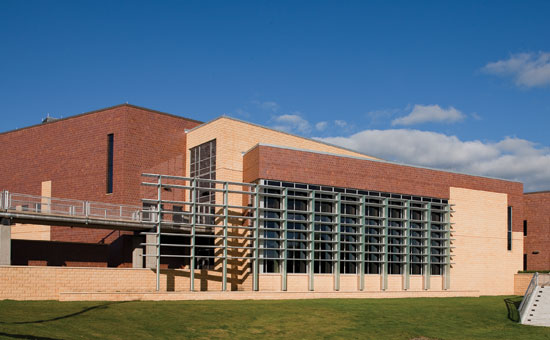Dynamic Solar Control with Electrochromic Glazing
Learning Objectives:
- Explain the impact of glazing on energy consumption in buildings and compare different approaches to sun shading solutions that affect energy use.
- Analyze the energy and environmental benefits related to the control of electrochromic dynamic glazing.
- Examine the human factor aspects of using differing zones of electrochromic dynamic glazing in a building façade.
- Recognize key considerations in designing and specifying electrochromic glazing to achieve maximum performance, including potential contribution to LEED® points.
Credits:
Allowing sunlight into buildings has been an important design consideration for centuries. Appropriately controlling that sunlight however has been the focus of many different efforts, particularly in recent times. The attention has been placed on harvesting the desirable characteristics of sunlight in a building while being able to reject or dampen the undesirable characteristics. Achieving that balance has taken on many forms from controlling the orientation of buildings, to using exterior overhangs or interior blinds. It has also included the use of glass and glazing that is treated or coated to have certain light and heat transfer characteristics. All of these solutions have been fixed or static solutions meaning that they have very little or no adjustability beyond their initial installation. But today, electrochromic glazing has changed that and offers a new design solution that is truly variable or dynamic.
Electrochromic Glazing: Glass at a New Level
Abundant natural daylight has consistently been regarded as a key factor in the design of sustainable buildings. The reason is the powerful impact it has on the occupants of those buildings. People respond positively to natural light, views, and the connection to the outdoors that windows provide. In fact, a 2009 study conducted by Pike Research entitled “Energy Efficiency Retrofits for Commercial and Public Buildings” found that “ ...office workers, teachers, and students love green buildings…they attend work and school more regularly, are sick less often, and are more productive...” This study and many others have confirmed what most of us know instinctively—people feel better and perform better in spaces where there is abundant daylight.
There is a difference between being in a pleasantly daylit space compared to having direct sunlight shining in your eyes. We put windows in buildings for a reason; however, the intensity of the sun and the potential for bright spots or glare make the space uncomfortable for occupants. Bright spots and glare are particularly an issue in rooms where computer monitors or similar screens are commonly in use such as office buildings, schools, higher education, and even residences. In addition, regular exposure to direct sunlight causes many materials to wear and fade, thus shortening their life and compromising their inherent qualities such as color, texture, and durability.
 |
Controlling sunlight penetration through glazing is possible at different levels and on different windows using electrochromic glass. Photo courtesy of SAGE Electrochromics, Inc. |
From an energy standpoint, sunlight generates solar heat gain. In northern U.S. climates during the heating season, harvesting that sunlight and allowing it to transform into useful solar heat energy can be desirable and sought after. But for the rest of the year and in southern U.S. climates that solar heat energy will still be working during months when cooling is the desired mode. Hence, rejecting that solar gain caused by the sun then becomes more important. So, while glass and glazing may be desirable for daylight and outdoor views, traditionally there has been a distinct tradeoff between daylight and solar heat gain as window to wall ratios increase.
The key to good window design in buildings, then, is to find ways to balance both the amount and characteristics of glazing so the daylight, view, and energy benefits are maximized while the glare, fading, and energy penalties are minimized. Conventional design approaches to find that balance have included some very specific strategies—each with their own pros and cons:
Interior blinds and shades. For most situations, this is probably the most common strategy. Mounting adjustable blinds or shades inside the glazing changes the amount of glare that a person experiences inside the building, but also lowers the amount of light and covers the views. In that case, the benefits of having windows are lost but the energy costs continue. Further, in large settings, it is common that once the blinds or shades are set to a particular position, they are often left there beyond the time intended, further reducing the benefits of the windows. From a cost standpoint, these products often require significant amounts of energy to produce, maintain, replace, and dispose of over the course of their life. And since they are notorious for collecting dust, they require regular cleaning and maintenance which has its own ongoing cost. If the option of automatic controls is added to raise and lower shades for example, that does help with maintaining some of the benefit, but at a notable additional cost.
 |
Fixed exterior shading devices like the ones shown here cannot adjust to changing weather and light conditions. Photo courtesy of SAGE Electrochromics, Inc. |










